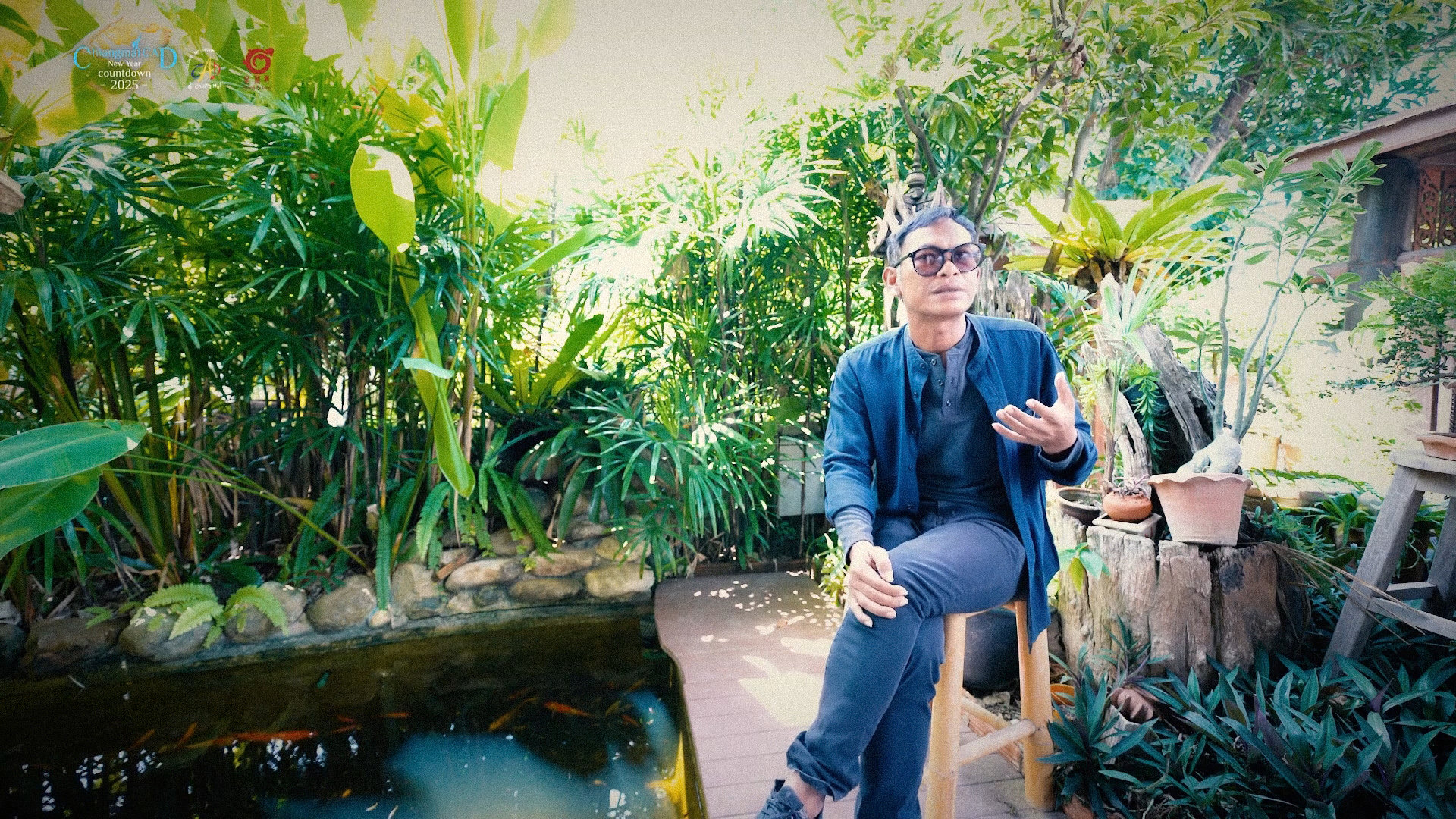Integration of Cultural Capital and Technology

Summary based on an interview with Wannachai Wongtala from the Yi Peng Lantern Festival by Chiangmai CAD
The utilization of existing cultural capital in conjunction with cutting-edge technology serves as a strategy to enhance the competitiveness of organizations and communities. Whether by increasing the value of products or services, promoting tourism, or even creating a distinctive national image, integrating technology—sometimes not originally available as a resource—with inherent cultural capital not only boosts competitiveness but also declares to the world that this country possesses an intriguing and uniquely identifiable culture.
Wannachai Wongtalā currently serves as an adjunct professor in the Department of Media Arts and Media Design for over 15 years. Although teaching is part of his profession, he is particularly interested in developing programming and design projects related to IT and modern technology. In recent years, he has expanded his work into the field of artificial intelligence (AI) to drive innovation in society through the application of his knowledge and technology.
The concept of C.A.D. is akin to a national representative that highlights culture as a key feature to promote tourism and build a positive national image. It is believed that Thailand possesses a rich diversity of cultural heritage. Although conflicts may sometimes arise between traditional values and modern adaptations, culture must, in essence, continuously evolve and progress.
One of the strengths of C.A.D. lies in the application of Lanna culture within the tourism sector. By showcasing the diversity of traditions and various ethnic groups, it is possible to attract both domestic and international tourists to experience authentic cultural encounters. This is achieved through collaborations with various stakeholders such as airlines, hotels, and local communities, which in turn contribute to sustainable economic and regional development.
The idea of merging technology with tradition demonstrates an innovative approach that can be creatively applied to cultural events. For instance, he recalled witnessing a breathtaking display of floating lanterns one November evening, which inspired him to consider that if linked with digital technology—such as an e-ticket system—those residing far away could conveniently purchase tickets online without relying on paper tickets. This system was piloted and later expanded to various agents in Europe and China, enabling efficient and real-time management of event participants.
The integration of digital technology enables people from around the world to access the country’s cultural events without borders. With 90-95% of participants being foreigners, the registration and verification processes are executed swiftly and accurately. Moreover, C.A.D. fosters a familial work atmosphere that encourages team members to fully express their creative ideas. Although this open management style might be perceived as a weakness from the perspective of conventional global business practices, it is viewed as an approach that better harnesses potential and fresh ideas compared to a strictly controlled system.
Cultural Preservation and Environmental Challenges
Despite numerous achievements, the challenge of transmitting and preserving cultural heritage for younger generations remains critical. Efforts to establish foundations and associations aim to broaden support for cultural preservation. Additionally, regarding the use of paper lanterns—which may pose environmental issues—there are plans for short-, medium-, and long-term solutions, including designating release areas away from urban centers, organizing the collection of lanterns, and researching more eco-friendly lanterns.
Cultural capital continues to be a significant strength for the country, particularly in creating “soft power” for the nation. Although technology and communication methods evolve, the importance of preserving and passing on valuable cultural heritage must remain continuously supported—whether through festivals or the creation of new innovations adaptable to the modern world. What matters is that the nation can safeguard and transmit its “national treasures” to future generations in a sustainable manner.



